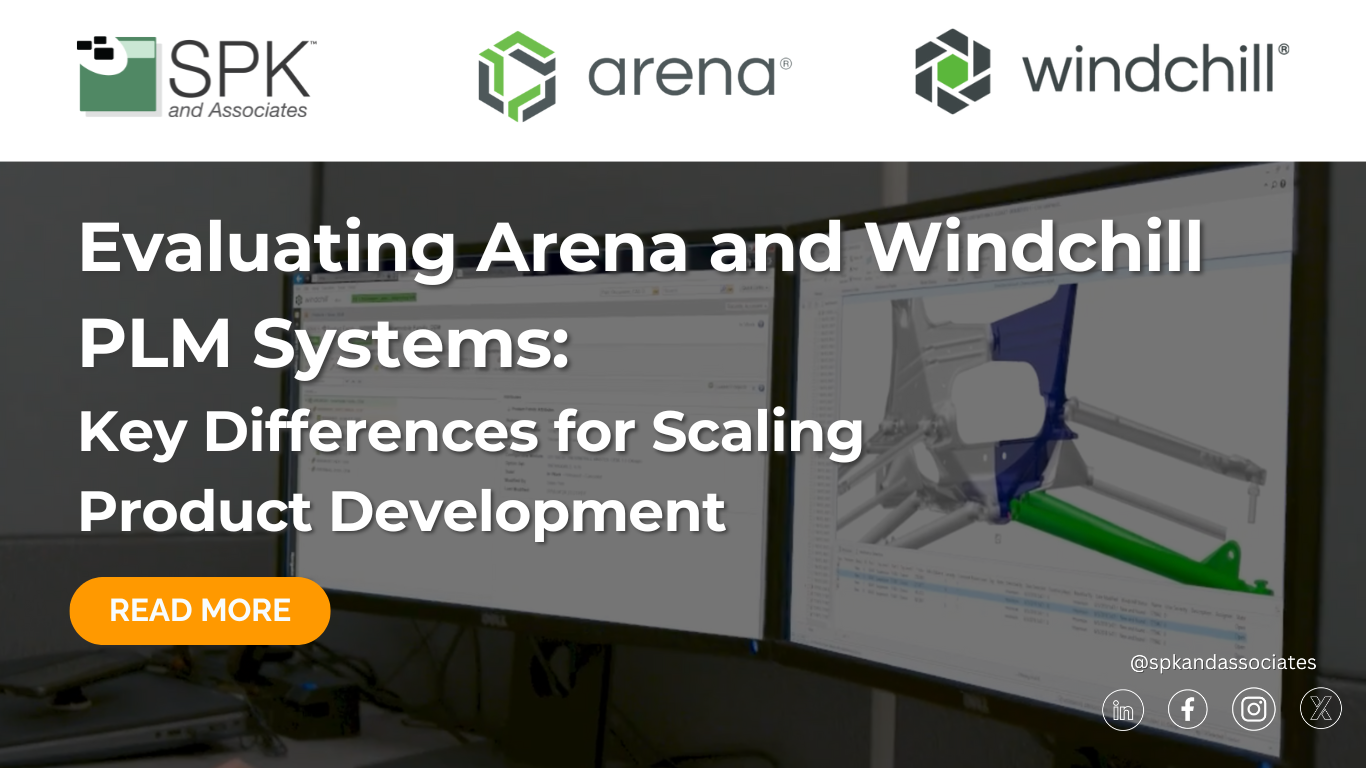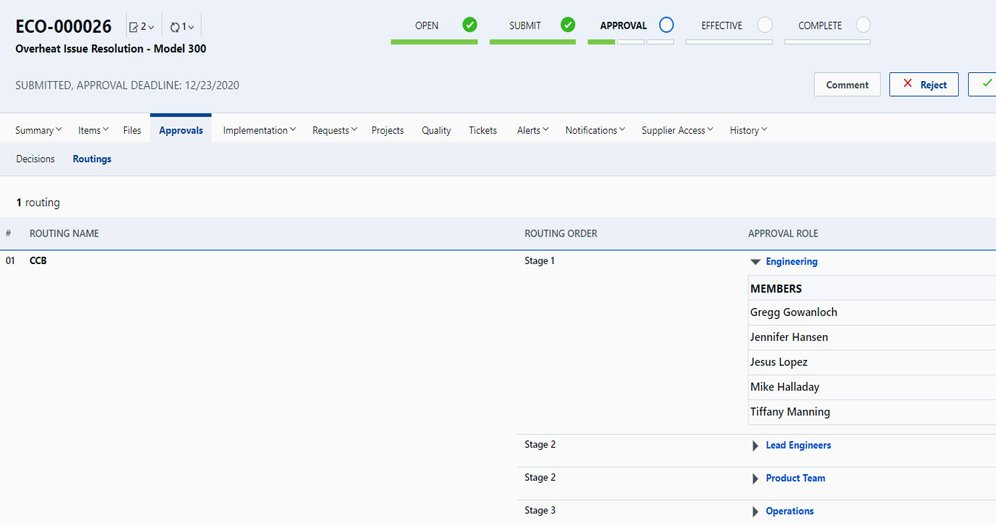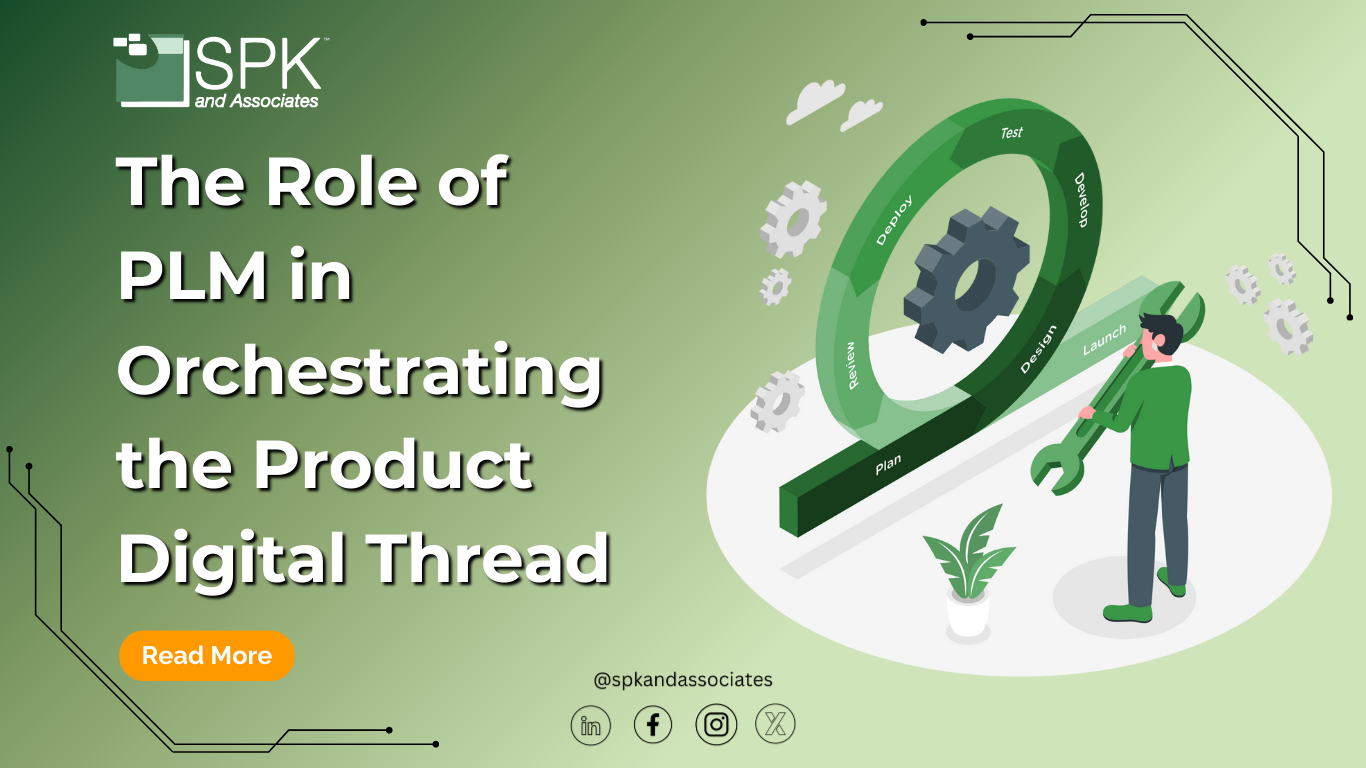As companies grow and product complexity increases, selecting the right Product Lifecycle Management (PLM) system becomes a critical decision. Two of the most widely used PLM platforms—Arena and Windchill—offer distinct approaches to managing product data, enabling collaboration, and supporting compliance. However, while both are designed to streamline product development, they cater to different stages of organizational maturity and engineering complexity. In this blog post, we’ll explore the key differences between Arena and Windchill, helping you evaluate which system is best suited for your current and future product development needs.


Cloud-First Simplicity vs. Enterprise-Grade Power
Arena PLM is a cloud-native, SaaS-based solution that appeals to small to mid-sized companies. It is especially useful for startups or fast-growing teams looking for a simple and rapid deployment. It focuses heavily on ease of use, supplier collaboration, and straightforward BOM and change management. Arena was acquired by PTC in 2020.
Windchill, by contrast, is a highly configurable, enterprise-scale PLM platform built to support complex engineering environments. This solution can sit on public or private cloud solutions, or on virtual or physical hardware in an on-premise environment. It offers deep integration with CAD tools and supports configuration management. It is ideal for large, global teams dealing with compliance, product variants, and extensive data sets.

CAD Integration and Engineering Workflows
One of the most significant differences between Arena and Windchill is how they manage engineering data and CAD files.
Arena supports basic document management and can store design files, but it lacks native integration with major MCAD and ECAD systems. This limitation can create challenges for companies with heavy engineering workflows or the need for traceability between design iterations and BOMs.
Windchill, on the other hand, is deeply integrated with PTC Creo. It also supports SolidWorks and other CAD platforms through the Windchill Workgroup Manager. It enables engineers to manage files, revisions, dependencies, and structures directly from their CAD tools. This makes it ideal for engineering-driven organizations that need tight control over design data.
Scalability and Performance
When evaluating PLM systems for scalability, it’s important to consider not just the number of users, but also the volume of product data, the number of variants, and regulatory complexity.
Arena is optimized for simplicity and speed. It’s well-suited for companies with relatively flat BOMs and smaller product portfolios. However, as product lines expand or systems engineering becomes more prominent, Arena’s architecture and capabilities can feel limited.
Windchill is designed for complex, configurable products and multi-disciplinary collaboration. It handles large product structures, product line engineering (PLE), and complex versioning with ease. It also supports multi-site collaboration and enterprise-wide standardization, making it a better fit for scaling organizations.
Change Management and Traceability
Both platforms offer change control features, but they differ in execution and depth.
Arena provides user-friendly change workflows (ECOs, ECNs) that are easy to configure and manage. It’s ideal for companies looking to get started quickly with digital change control.
Windchill offers fully customizable, rules-based workflows that support complex approvals, traceability, and role-based access. It can manage dependencies across systems, making it essential for regulated industries like medical devices, aerospace, and automotive.
Compliance and Regulatory Support
Compliance is a major driver for PLM adoption, especially in regulated industries.
Arena offers modules and templates to support compliance with ISO 13485, FDA 21 CFR Part 820, and other standards, which is great for medical device companies just starting their regulatory journey.
Windchill goes further by enabling full traceability, digital thread alignment, and integration with tools like Codebeamer for requirements management. This makes it ideal for companies needing to comply with ISO 26262, DO-178C, or EU MDR, where traceability and validation are mission-critical.
Configurability and Ecosystem
Windchill’s strength lies in its flexibility. It allows companies to create tailored workflows, data models, and integrations with ERP, MES, and other enterprise systems. It also integrates with ThingWorx, PTC’s IoT platform, for advanced analytics and digital twin capabilities.
Arena, while easy to deploy, offers limited customization. For organizations with simple processes, that’s an advantage. However, as your needs become more complex, the lack of configurability can be a constraint.
Summary of Windchill vs. Arena
When to Choose Arena vs. Windchill
Arena vs. Windchill
Arena and Windchill are both strong PLM platforms, but they serve very different use cases. Arena is excellent for companies looking to establish basic product control and compliance quickly. Windchill, by contrast, is built for organizations that need to scale efficiently, manage engineering complexity, and integrate across a broader digital ecosystem. If your company is growing and facing challenges with CAD data management, process customization, or compliance, it might be time to explore Windchill as a long-term PLM solution.
Need help evaluating your options? SPK and Associates has over 20 years of experience helping engineering and product teams implement the right PLM strategy. Contact us today to schedule a PLM readiness assessment or migration consultation.










